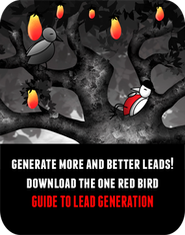B2B marketing and B2C marketing are like two different dog breeds. Sure, there’s a big difference between a German shepherd and a poodle, but at the end of the day, they’re both dogs.
And at the end of the day, B2B and B2C marketing are both about people. Even when dealing with businesses, sales are still largely dependent on human relationships.
Nonetheless, just as you wouldn’t handle a pit bull the same as you would a basset hound, B2B marketing and B2C marketing demand different approaches.
Why Is This Important?
If you’re trying to market to businesses but you treat enterprise buyers and influencers like they’re “one-off” consumers, you’re not going to make the people connections necessary for successful B2B marketing.
That’s because B2B purchase decisions are relatively complicated and multi-faceted compared to B2C buying. Compared to a typical consumer purchase, decisions about products or services for use in business usually:
- Involve a more-complex value proposition than a typical consumer purchase.
- Have higher transaction values.
- Are made by a group of people.
- Take much longer to reach.
Of course, there are some consumer purchases that rise to the complexity of B2B decisions, such as buying a house or car. But generally speaking, B2C depends more on branding, advertising, promotions, and so forth to spur sales, which are often made “anonymously” and impulsively—as opposed to the hard business calculations and personal business relationships that drive B2B sales.
Branding, advertising, and promotion are all vital in B2B marketing, as well. But because of B2B marketing’s more-complex and lengthier buying cycle, it demands marketing involvement for a longer time, and with more specificity.
Both types of marketing are about people, and making the right connection with the right people at the right time is the goal of both. But in B2B marketing, the “right people” and “right time” are usually not as clear as with consumers. And figuring out what the “right connection” (i.e., type of content to provide) becomes a much-more-individualized determination.
If you’re just relying on a marketing strategy that treats business buyers like consumers, sending out broad messages with no significant targeting or personalization—then you’re not really doing B2B marketing.
What Can You Do?
You need to stay engaged with B2B leads throughout their buy cycles, always strengthening your relationships with them, always realizing that—even in B2B transactions—people make emotional decisions based on who they trust, respect, and like.
But building these critical relationships isn’t easy. In todays’ B2B buyers have unprecedented access to information about companies, products, and services. They’re not interested in getting a sales pitch before they’d done their exploring and are fairly close to buying.
That’s where inbound marketing comes in. By supplying useful, relative content that your leads find useful, you can begin to build the trust and respect that are so important in the very human decisions about which businesses to do business with.
Fortunately, today’s marketing automation technology allows you to automate much of the inbound marketing process, particularly early in B2B leads’ buy cycles. By integrating marketing automation with CRM software, you can be sure to continually engage leads with the content appropriate to where they are in their buy cycle.
Eventually, this inbound marketing pays off in sales-ready leads who have been primed to buy. Conversions are easier because they already have a positive relationship with your company. You’ve already got one foot well in the door.
The Bottom Line
B2B marketing and B2C marketing are both about influencing people and their buying decisions. But because of the complexity of B2B buy cycles, B2B marketing requires a correspondingly more-intricate and process-driven approach.



